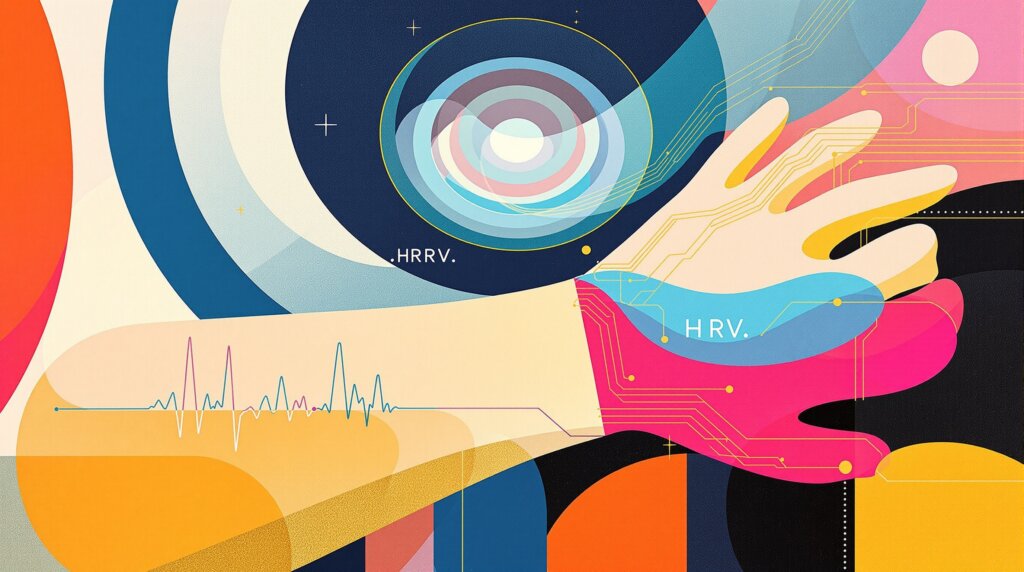In today’s data-driven world, wearable technology has become an essential companion for anyone serious about improving their health, fitness, and wellness. Whether you want to monitor your heart rate, optimize your sleep quality, track daily activity, or analyze stress levels, the right wearable device can transform your health journey. But with countless options—ranging from sleek smartwatches to discreet fitness trackers—how do you select the best one for your specific health goals?
This comprehensive guide walks you through every step of choosing the best wearable, so you can make a confident, informed decision.
Understanding What a Health Wearable Does
Before diving into specs and brands, it’s crucial to understand what a wearable device can actually do for your health. These compact, sensor-packed gadgets collect real-time physiological data, helping you monitor and analyze key health metrics such as:
-
Heart rate and HRV (Heart Rate Variability)
-
Blood oxygen levels (SpO₂)
-
Caloric expenditure
-
Sleep stages and duration
-
Activity tracking (steps, distance, intensity)
-
Stress and recovery levels
-
Menstrual cycle tracking
-
ECG (Electrocardiogram) readings
Essentially, wearables translate complex biological signals into actionable insights, enabling you to make data-informed choices about your training, nutrition, and lifestyle habits.
Define Your Personal Health Goals First
Every person’s health journey is unique. Before comparing features, define what outcome you want from your wearable. Here’s how to match your goals with the right device features:
1. For Weight Management
If your focus is on losing or maintaining weight, choose a wearable that tracks:
-
Steps and calories burned
-
Activity intensity
-
Heart rate zones
Devices like the Fitbit Charge 6 or Garmin Vivosmart 5 excel here due to accurate calorie expenditure algorithms and reliable daily activity reminders.
2. For Fitness and Athletic Performance
Athletes and fitness enthusiasts should prioritize wearables offering:
-
GPS tracking for running/cycling
-
VO₂ max estimation
-
Training readiness scores
-
Recovery and strain analysis
Brands like Garmin, Polar, and Coros are ideal for endurance athletes, offering granular data and advanced training analytics.
3. For Heart Health Monitoring
If you’re tracking heart rhythm irregularities or blood pressure trends, look for:
-
ECG capability
-
Continuous HR and HRV tracking
-
Blood pressure monitoring (select models)
The Apple Watch Series 9 and Samsung Galaxy Watch 6 are medically approved for ECG accuracy in many regions.
4. For Sleep and Stress Management
Sleep quality plays a major role in health optimization. Choose wearables with:
-
Sleep stage tracking (REM, light, deep)
-
Stress detection using HRV
-
Guided breathing or mindfulness features
The Oura Ring Gen 3 and Whoop 4.0 are market leaders for advanced sleep analysis and recovery metrics.
Key Factors to Consider When Buying a Wearable
1. Sensor Accuracy
The foundation of a good wearable is data accuracy. Optical heart rate sensors, motion trackers, and skin temperature sensors must be precise. Look for devices that have undergone third-party validation or peer-reviewed studies supporting their metrics.
2. Battery Life
Battery life can range from one day to two weeks depending on the model. If you’re constantly on the move, a long-lasting battery is essential. Garmin and Whoop devices typically outperform others in this category.
3. Comfort and Design
You’ll be wearing this device all day—and often at night. Choose a design that’s comfortable, lightweight, and skin-friendly. Rings and clip-ons (like Oura or bleo) offer discretion, while watches and bands (like Fitbit or Apple Watch) provide visibility and versatility.
4. App Ecosystem and Data Insights
The wearable’s companion app is where the real magic happens. It should present data in a user-friendly dashboard, offering clear interpretations, trends, and suggestions. Integration with popular apps such as Apple Health, Google Fit, Strava, or MyFitnessPal adds convenience and synergy.
5. Compatibility and Connectivity
Ensure your device syncs seamlessly with your smartphone OS (iOS or Android) and offers Bluetooth, Wi-Fi, or ANT+ connectivity. Compatibility determines how easily you can integrate your wearable data into your broader digital health ecosystem.
6. Price and Value
High-end wearables can exceed $400, but many mid-range options offer incredible functionality for less. Prioritize features you’ll actually use over premium aesthetics or unnecessary extras.
Top-Rated Wearables by Category
| Health Goal | Recommended Wearable | Key Strength |
|---|---|---|
| General Fitness | Fitbit Charge 6 | Balanced tracking and affordability |
| Heart Health | Apple Watch Series 9 | Medical-grade ECG and HR monitoring |
| Recovery Optimization | Whoop 4.0 | Deep recovery analytics and HRV trends |
| Sleep Tracking | bleo Ring | Unmatched sleep and readiness data |
| Multisport Training | Garmin Fenix 7 | Advanced metrics and robust GPS |
| Stress Management | Samsung Galaxy Watch 6 | Stress tracking and mindfulness tools |
Data Privacy and Security Considerations
With growing concern about personal health data, always review how your wearable brand handles data encryption, sharing, and storage. Reputable companies like Apple, Garmin, and Oura adhere to strict GDPR and HIPAA standards, ensuring your biometric data stays confidential.
Avoid brands that lack clear data transparency policies or require excessive third-party data sharing. Your privacy is as important as your health.
Future Trends in Health Wearables
The next generation of wearables is moving beyond basic metrics to provide predictive health analytics. Expect innovations such as:
-
Continuous glucose monitoring (CGM) for non-diabetics
-
Hydration level sensors
-
AI-driven stress prediction models
-
Personalized health coaching powered by machine learning
These developments will make wearables not just trackers but proactive digital health companions capable of predicting illness and optimizing long-term wellness.
Conclusion
Choosing the right wearable for long-term health monitoring means balancing comfort, sensor fidelity, and battery life. For users focused on improving sleep and tracking daily recovery, a well-designed smart ring can offer continuous, unobtrusive data collection that fits into everyday life.
When evaluating devices, pay attention to validated measures like heart rate variability, sleep stages, and activity detection. Recent research into the sleep-tracking accuracy of commercial wearable devices highlights that not all trackers perform equally—look for devices and algorithms that have been independently tested.
For users who want combined metrics—activity, SpO2, and sleep—wearable bands remain a versatile choice. A quality fitness band can provide a larger sensor array and longer battery life, making it a solid option for multi-day monitoring and active lifestyles.
If monitoring for cardiac irregularities is a priority, consider devices and workflows designed for arrhythmia detection. Resources that discuss how wearables capture and report suspicious rhythms can help you understand when to seek clinical follow-up; for example, guides about wearable ECG smart watches and atrial fibrillation explain common capabilities and limitations.
In practice, pair your chosen wearable with a platform that prioritizes secure data storage and long-term analytics so you can track trends over months and years. Whether you choose a ring for continuous sleep insights or a band for broader activity tracking, consistent data collection and validated accuracy are the keys to actionable health insights.
Frequently Asked Questions
Which wearable is best for tracking sleep and recovery?
Look for devices with validated sleep staging, heart rate variability (HRV) tracking, and continuous heart rate monitoring. Features like sleep score, sleep stage breakdown, and recovery insights (HRV trends, resting heart rate) help you optimize rest. Prioritize comfort for overnight wear and app features that show long-term trends.
Can a smartwatch detect heart problems?
Some smartwatches offer ECG, irregular rhythm notifications, and continuous heart rate alerts that can flag potential issues. They are useful screening tools but not definitive diagnostics — always follow up with a healthcare professional and clinical testing if a device flags an abnormality.
How do I choose a wearable for fitness versus metabolic health monitoring?
For fitness, prioritize accurate GPS, accelerometer-based activity tracking, and training metrics (VO2 max, cadence, power). For metabolic and longevity goals, look for continuous glucose monitoring (CGM) compatibility, sleep and HRV tracking, SpO2, and recovery analytics. Choose based on the specific biomarkers you want to track and whether you prefer single-device convenience or a combination of specialized tools.
Are medical-grade wearables worth the extra cost?
Medical-grade devices can offer higher accuracy, clinical validation, and direct data for clinicians, which is valuable if you have a health condition or need reliable diagnostics. For general wellness and long-term trend tracking, consumer wearables often provide sufficient insights at a lower cost. Match the device class to your needs and budget.
How long should a wearable’s battery last for reliable health monitoring?
Aim for at least 24–48 hours of battery life for continuous monitoring; for overnight sleep and multi-day trend tracking, 4–7 days is ideal. Longer battery life reduces gaps in data and increases adherence, but balance this against features you need (ECG or continuous GPS can shorten battery life).



